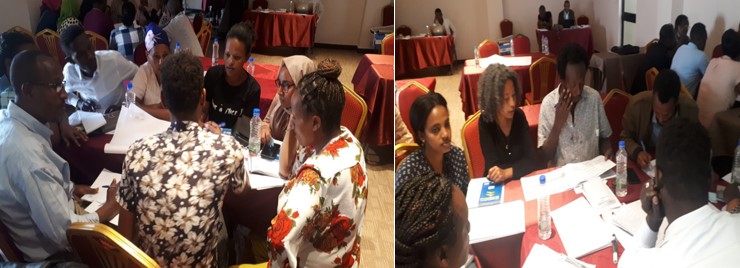

In 2017, Ethiopia developed a national rabies elimination strategy focusing on four main pillars; mass dog vaccination, provision of pre- and post-vaccine prophylaxis, education and awareness and increased surveillance. To complement these activities, a three-day training was organized by UK Health Security Agency (UKHSA), World Health Organisation (WHO), Ethiopia Public Health Institute (EPHI) and Ministry Of Agriculture (MOA) from 20th to 22nd Feb 2023 for animal health assistants (AHA) and community health extension workers (CHEWs) who are frontline health workers, working directly with the communities or in the villages to provide basic prevention and care services. The training was aimed at raising awareness of rabies as a fatal disease, laying the foundation for enhanced surveillance and reporting of suspected rabies human and animal cases, publicizing the ongoing mass dog vaccination, and ensuring increased uptake and adherence to postexposure prophylaxis.
The objectives of this three-day training were as follows:
- To increase the understanding of participants on rabies prevention and control activities and its contribution for Rabies elimination strategies
- To educate the participants how to report and link rabies exposures to health facilities and veterinary sectors to get timely examination and treatment as well as enhancing surveillance systems
- To enhance community engagement on rabies prevention and control activities through risk communication efforts of HEW’s and AHA
- To gain feedback from training in order to strengthen the training before scaling up to other regions
The expected results were as follows:
- Increased knowledge and awareness of participants on rabies, to enhance and engage local communities on rabies prevention and control activities.
- Enhanced rabies Surveillance’s systems in the trainee local communities
The training brought together 40 CHEWs and other AHA who were trained on the public health importance of rabies, transmission, and enhancing surveillance and reporting of rabies. Scenarios of suspected rabies a cases were demonstrated for participants to demonstrate how they should be handled. The ongoing mass dog vaccination campaign was described and their role in publishing the activities was explained.
Dr.Feyesa Regasa – chair of the National One Health Steering committee and Ethiopia IHR focal person, warmly welcomed the participants, thanked them for their attendance, and delivered the welcome and opening note. Dr. Baye Wassie introduced the UKHSA IHR Strengthening project and its contributions in Ethiopia towards laboratory capacity building, workforce development, emergency preparedness and response, chemicals and hazards and One Health in collaboration with EPHI, MOA, WHO, Africa Centres for Disease Control and Prevention (ACDC) and other partners. The training’s objectives and expected outcomes were explained. Dr Anne Wilson, Head of the IHR Strengthening Project and Sajil Liaqat, Country Lead for the IHR Strengthening Project in Ethiopia were in attendance at the training and thanked the organisers and participants for their efforts towards the eradication of Rabies from the national to local community level.

The training began with an introduction to the disease—rabies and its epidemiology. Collaboration between the public and veterinary departments was emphasized as a cornerstone of fighting the disease. The action required to be undertaken in cases of reported/suspected cases included cleaning the bite area with running water and soap for 15 minutes, immediate referral to the hospital for post exposure vaccination, reporting the suspected cases to the health facilities and creating community awareness about suspected human and animal Rabies cases. The roles of the AHA and CHEW in the prevention and control of rabies were emphasised, and overlapping areas were also discussed. This included the responsibility to report human and animal rabies suspected cases, mobilizing communities to present their dogs for mass dog vaccination and continuous community education on rabies. Participants were tasked with playing a role in the current Ethiopian strategies to eliminate dog mediated human rabies deaths by 2030.

The training was interactive to ensure knowledge was disseminated and accurately perceived and understood by the participants. This was supported with training materials and handouts on community education and awareness to enhance surveillance systems in their local communities.

The closing ceremony of the training was led by the rabies technical working group who thanked the participants for their active participation in the training.

Participants shared that training was very helpful and the content and exercises helped them understand the topic and its significance. They also shared that the information learnt would enhanced their working practices, notably through increased reporting and follow-up of rabies cases, and community mobilization and education.
Furthermore, prior to training, CHEWs and AHAs were each issued with self-assessment pre-training evaluation questionnaires to test their knowledge and experiences of Rabies. In the end, post training assessment was administered, and the results indicated improved knowledge across the board.
Many thanks to the participants, organisers and our partners for their hard work and input.
By Baye Ashenefe Wassie